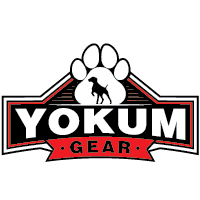As dogs age or face medical conditions, they might require additional assistance to maintain their mobility. One of the most common aids for such situations is a dog lift harness specifically designed to support the back legs. With a plethora of options available, finding the perfect harness for your furry friend can be overwhelming. This article will guide you through the key factors to consider when selecting the right dog lift harness for back leg support.
Understanding the Need for a Dog Lift Harness
Before diving into the selection process, it's essential to understand why a dog lift harness might be necessary. Dogs suffering from arthritis, hip dysplasia, spinal injuries, or postoperative recovery often experience weakness or pain in their hind legs. A dog lift harness provides support and helps redistribute weight, making it easier for your pet to walk, climb stairs, or get into vehicles.
Key Factors to Consider
1. Size and Fit
The most crucial aspect of choosing a dog lift harness is ensuring a proper fit. Measure your dog accurately around the chest, waist, and underbelly. It's advisable to refer to the manufacturer's sizing chart, as sizes can vary between brands. A well-fitted harness should be snug but not tight, providing enough room for movement without causing discomfort.
2. Material and Construction
The material of the harness plays a significant role in comfort and durability. Look for harnesses made from high-quality, breathable fabrics like nylon, neoprene, or mesh. Padding on the inside can prevent chafing and offer additional comfort. Reinforced stitching and robust clasps ensure the harness can withstand regular use without breaking down.
3. Support and Comfort
A good lift harness should provide ample support to the back legs and the dog's abdomen. Some models come with adjustable straps that distribute weight evenly and prevent strain on any single part of the body. Additionally, ensure the harness doesn't impede your dog's movement or cause undue stress on the spine or hips.
4. Ease of Use
Both you and your dog should find the harness easy to use. Look for models that are simple to put on and take off, with features like quick-release buckles. Consider the harness's weight; a lighter harness may be easier for daily use, especially for smaller or weaker dogs. Ease of cleaning is another practical aspect—opt for machine-washable materials when possible.
5. Adjustability
A highly adjustable harness can be customized to fit your dog perfectly. Multiple adjustment points allow you to fine-tune the fit around the chest, waist, and leg areas. This not only enhances comfort but also extends the lifespan of the harness as it can adapt to your dog's changing needs over time.
6. Additional Features
Some dog lift harnesses come with extra features that can enhance functionality. Handles on the back can help you lift your dog easily, while D-rings can be used for attaching a leash. Reflective strips increase visibility during nighttime walks. While these features are not essential, they can add value and convenience.
Popular Dog Lift Harness Brands
Several brands specialize in making high-quality dog lift harnesses. A few reputable options include:
- Ruffwear: Known for durability and ergonomic design.
- PETBABA: Offers harnesses focused on comfort and adjustability.
- HandicappedPets: Specializes in products for dogs with mobility issues.
- Labra: Provides budget-friendly yet reliable options.
Consult Your Veterinarian
Before purchasing a lift harness, consult your veterinarian. They can offer specific recommendations based on your dog's condition, size, and needs. This ensures that you provide the best possible support for your furry friend’s health and well-being.
Conclusion
Choosing the right dog lift harness for back leg support involves careful consideration of several factors, including size, material, comfort, and adjustability. Investing time in finding the perfect harness can significantly improve your dog's quality of life, allowing them to move more freely and comfortably. By following the guidelines outlined in this article, you'll be well-equipped to make an informed decision that benefits both you and your cherished pet.

